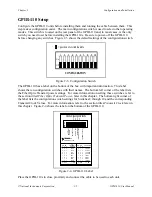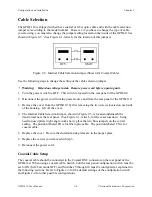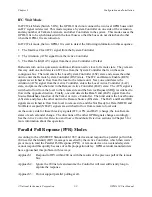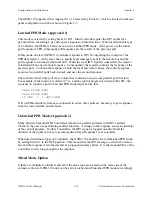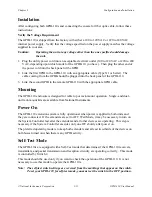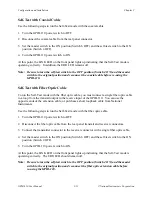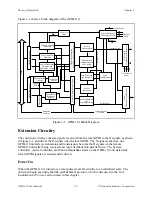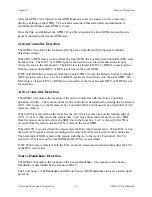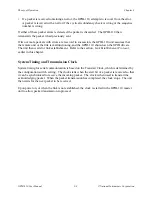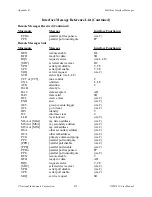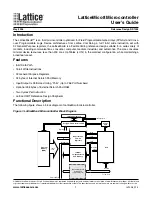
Theory of Operation
Chapter 3
GPIB-110 User Manual
3-4
© National Instruments Corporation
The LS Handshake state is also cleared on the following events:
•
When IFC Wait mode is selected with Switch 5 on the rear panel configuration switch and
before the Active Controller is identified
•
Whenever ATN from the local bus or R.ATN changes state
•
When ATN or DAV is received from the remote unit
•
During a parallel poll
The Remote Source (RS) Handshake state is cleared during the following events:
•
When IFC Wait Mode is selected with Switch 5 on the rear panel configuration switch and
before the Active Controller is identified
•
Whenever there is a change in state from the remote ATN signal
•
When ATN or DAV is received from the local GPIB
•
During a parallel poll
Until the LS state is true and unless a parallel poll is in progress, the unit drives the local NRFD
signal passively false. After the Active Controller is identified (if in IFC Wait mode) and until
the Source Handshake is identified, the unit drives NDAC true. Thus, the unit appears to the
local GPIB to be in a normal RFD/NDAC state, awaiting the first data or command byte.
When DAV is received from the Local GPIB, the LS state becomes true. DAV is then sent to
the remote unit as X.DAV.
When R.DAV is received from the remote unit, the signal is delayed 2
µ
s and the RS state
becomes true. Once the RS state is true, DAV is driven onto the local GPIB. Subsequently,
whenever R.DAV true is received from the remote unit, the signal is delayed 500 ns before being
driven onto the local GPIB to satisfy T1. The local NRFD and NDAC are sensed and sent to the
remote unit as X.RFD and X.DAC.
Once the LS state is true, the propagation of R.RFD from the remote side allows the handshake
to continue. At this point, the unit drives the NRFD and NDAC lines according to the levels
sensed at the remote unit and received as R.RFD and R.DAC.
Parallel Polling
When the GPIB-110 detects ATN and EOI simultaneously asserted on the local bus, the Parallel
Poll-In-Progress state becomes true and X.EOI is transmitted to the remote side along with
X.ATN. X.EOI and X.ATN continue to be propagated to the remote side until a Parallel Poll
Response is returned from the remote unit, even if the local ATN and EOI signals become false.
NRFD is asserted on the local bus during the Parallel Poll.
If the latched Parallel Poll Response (PPR) mode is selected, the contents of the PPR register are
driven onto the local GPIB DIO lines. Otherwise, the local GPIB DIO lines are driven passively
false until a packet is received from the remote unit containing the Parallel Poll Response. The
GPIB DIO lines are then driven with the response byte when it is received.



